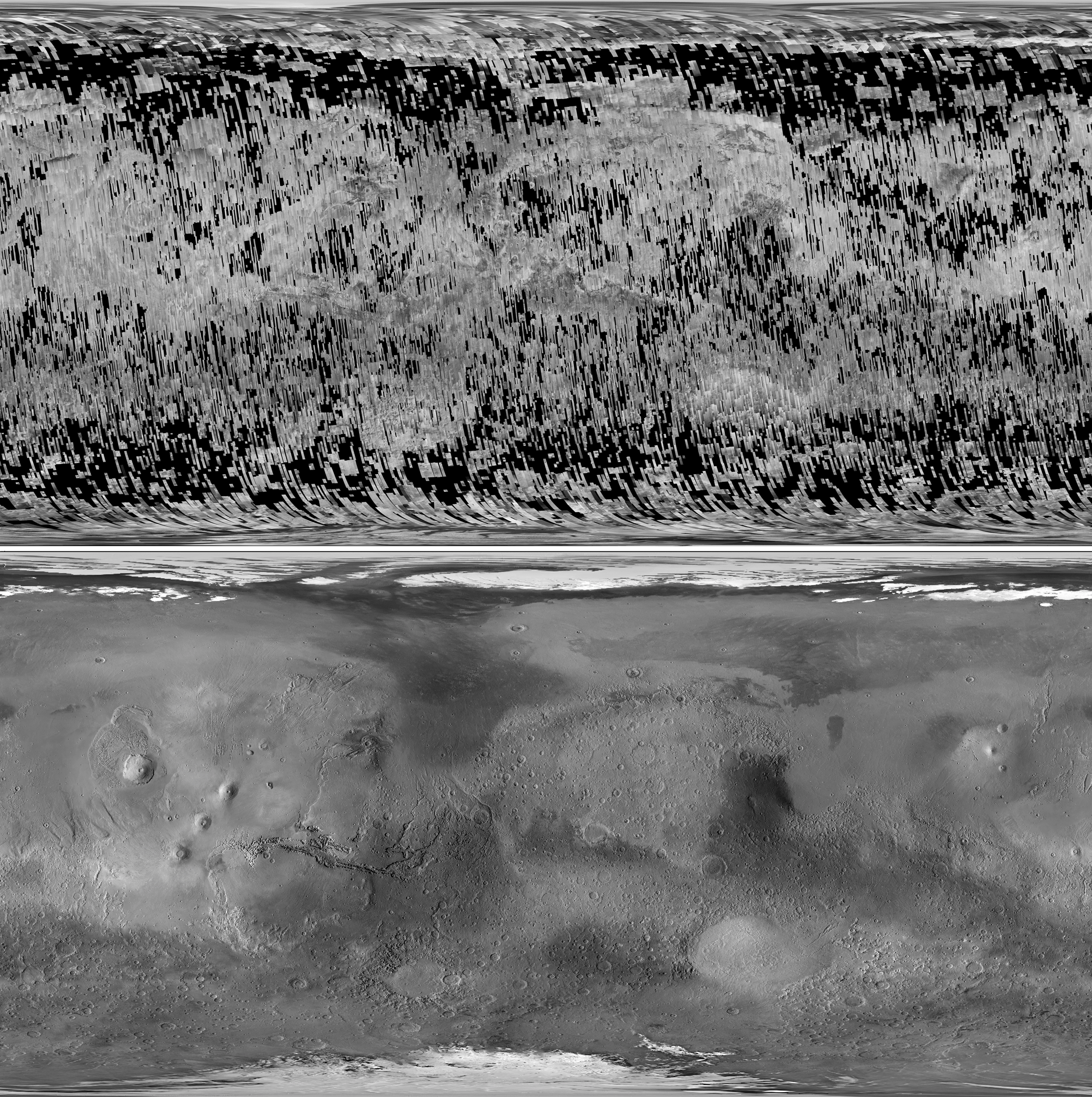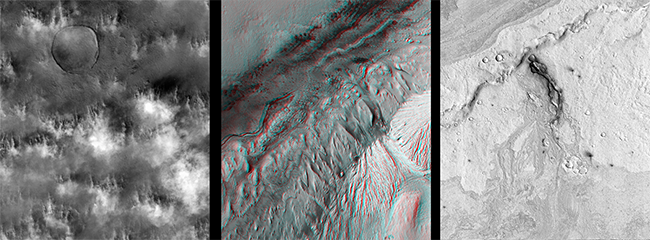MALIN SPACE SCIENCE SYSTEMS, INC.
SAN DIEGO, CA 92191-0148
TELEPHONE: (858) 552-2650, EXT. 500
http://www.msss.com/
Contact: Michael Ravine, ravine@msss.com
FOR IMMEDIATE RELEASE: 12 April 2012
MRO CTX SURPASSES 75% COVERAGE OF MARS
The Mars Reconnaissance Orbiter (MRO) Context Camera (CTX) reached a major milestone at the end of March 2012, surpassing 75% coverage of the surface of Mars at a resolution of ~6 m/pixel. Covering up to 9390 km2 in a single image, CTX is well suited not only to create large areal mosaics, but also to acquire extensive repeat coverage. Over 6% of the planet has been covered in stereo with CTX, aiding in quantitative geomorphic studies. In total, CTX has acquired repeat coverage of nearly 30% of the planet, including routine monitoring of over 800 separate locations for surficial changes and annual spring and summer mosaics of the southern polar cap to monitor ongoing martian climate change.
“While CTX wasn’t originally intended to map all of Mars at 6 m per pixel, it’s looking like we have a pretty good shot at it,” said Michael Ravine, the instrument project manager for the CTX development. “To put this in perspective, we don’t have that large a fraction of the land area of Earth covered at that high a resolution. Pretty good for a camera that is shooting from 200 miles away and only weighs seven and a half pounds.”
| Figure 2. Left: CTX view of dust raising off the martian surface in the Amazonis Planitia Region. Subframe of B12_014355_2155_XN_35N160W. Middle: CTX anaglyph of a portion of Mount Sharp in Gale Crater, the target of the Mars Science Laboratory rover mission, which lands in August. 3D glasses with a red left eye and blue right eye are required to see in three dimensions. Subframe of images P01_001488_1751_XI_04S222W and P22_009716_1773_XI_02S223W. Right: Vent in the Cerberus Fossae region. Subframe of CTX B11_013882_1872_XI_07N203W. Image credit: NASA/JPL-Caltech/Malin Space Science Systems. |
In addition to CTX, MSSS also built and operates the Mars Color Imager (MARCI) aboard the Mars Reconnaissance Orbiter. MSSS also built the Lunar Reconnaissance Orbiter Camera (LROC), operated by principal investigator Mark Robinson at Arizona State University, which continues to return 0.5 meter per pixel high-resolution images and 100 meter per pixel multi-spectral images after being launched in June 2009. MSSS also built and will be operating four cameras aboard the 2011 Mars Science Laboratory (MSL) rover mission and one camera aboard the 2011 Juno Mission to Jupiter.
Other activities of the company are described at www.msss.com.














 Copyright 2023 All rights reserved.
Copyright 2023 All rights reserved.